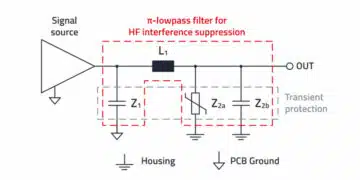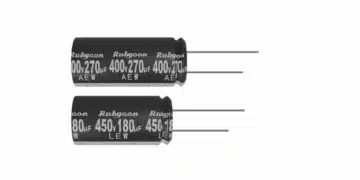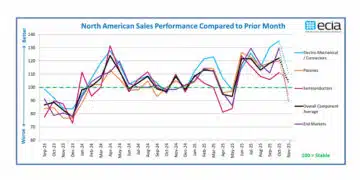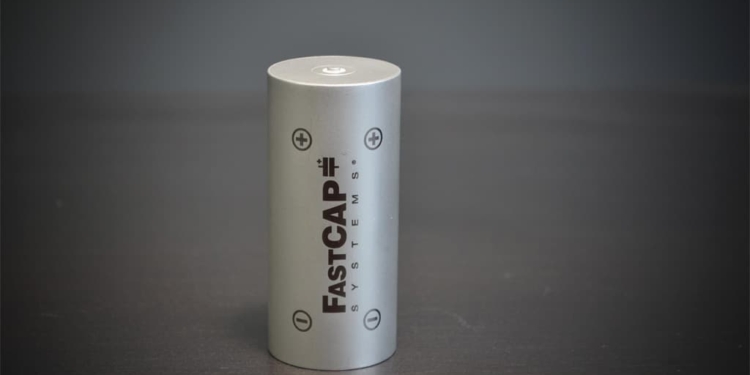Source: FastCAP news
Investment from NGK SPARK PLUG launches FastCAPs production of surface mount, reflowable energy storage and emergence in the advanced materials markets.
BOSTON, MA, April 3, 2018 – FastCAP Systems Corporation has announced a strategic partnership with NGK SPARK PLUG CO., LTD., a Japan-based company that specializes in packaging for complex electronic applications. The investment from NGK SPARK PLUG boosts FastCAP’s capability to bring to market a new generation of energy storage devices for the electronics components industry.
FastCAP’s expertise in extreme environment energy storage paved the way for the company’s newest technology – a reflowable, slim profile, low-ESR ultracapacitor which provides power loss protection in SSD and IOT technologies. FastCAP’s solution has ten times more energy per unit of volume and five times longer lifetime than incumbent technologies such as tantalum capacitors.
FastCAP’s latest achievement relies heavily on NGK SPARK PLUG’s superior knowledge in the manufacture of technical ceramics. Through advanced research and development, NGK SPARK PLUG has expanded into numerous industries including computers, communication, medical, avionics, and high reliability applications.
“The industry has long recognized the potential of ultracapacitors to provide high power, high capacity energy storage solutions. However, high performance ultracapacitors were not available as rugged, reflowable devices suitable for surface mount technology,” said Eric Kish, CEO of FastCAP Systems. “The combination of FastCAP’s proprietary electrode and electrolyte technology with NGK SPARK PLUG’s high performance ceramic packaging has broken through this barrier, giving engineers access to a new class of practical on-board energy storage. We expect this technology to revolutionize power management in applications as diverse of solid state drives. IoT devices, and automotive.”
“I am very pleased with this strategic partnership with FastCAP Systems.” said Teppei Okawa, Executive Vice President of NGK SPARK PLUG CO., LTD. “This, combined with a shared vision of the importance of innovative energy storage solutions, is an exciting opportunity for both companies. This alliance enables us to accelerate our other batteries projects, and is an early achievement for our newly established USA Innovation Center.”
FastCAP Systems has also launched Nanoramic, a division devoted to the development of nanocomposite materials grounded in FastCAP’s deep expertise in advanced materials made of nanocarbons. Support from NGK SPARK PLUG will accelerate the go to market timeline for Nanoramic products and positions FastCAP to interrupt diverse markets including thermal interface materials, battery and capacitor electrodes, and EMI/RFI shielding technology.
About FastCAP Systems:
FastCAP is an innovation driven company with a straightforward vision – to make a big impact in energy. In 2010, FastCAP began work under a multi-million dollar grant from the DOE ARPA-E to develop its novel ultracapacitor technology. FastCAP was honored to receive another grant in 2011 from the DOE Geothermal Technologies Program to develop a cutting edge power system for geothermal exploration. FastCAP has achieved five validated world performance records related to the power and energy density of its cells. FastCAP has gone on to achieve additional validated world records related to its high temperature ultracapacitor technology, including the highest operating temperature. These breakthrough performance characteristics have laid the foundation for FastCAP’s unique product solutions in a wide variety of applications, from vehicles to energy and space exploration. For more information, visit www.fastcapsystems.com.
About NGK SPARK PLUG CO., LTD.:
NGK SPARK PLUG CO., LTD., headquartered in Nagoya, Japan, is a comprehensive ceramics processing manufacturer. We hold a world leading share of spark plugs and automotive sensors for internal combustion engines and also offer a broad lineup of packages, cutting tools, bio ceramics and industrial ceramics. Our global network of sales and manufacturing organizations, and over 15,000 employees deliver value creation to the world. We are now contributing to a sustainable society by developing products related to the environment energy, next generation vehicles and the medical device and diagnostic. The company’s belief is to embrace the challenge of new era under the catch-phrase of “manufacturing only one and number one product”. For more information, visit http://www.ngkntk.co.jp/english/index.html































